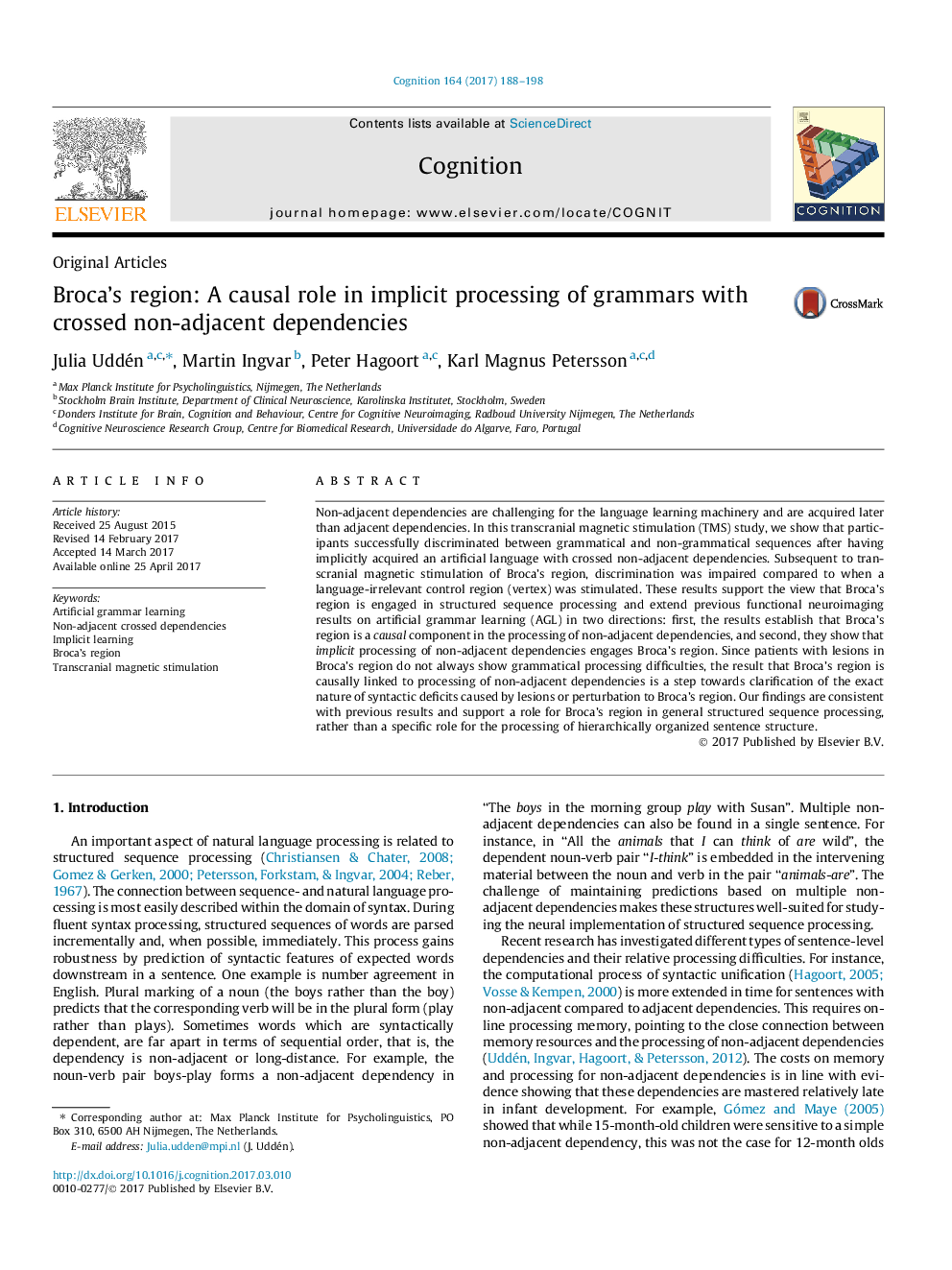| Article ID | Journal | Published Year | Pages | File Type |
|---|---|---|---|---|
| 5041609 | Cognition | 2017 | 11 Pages |
Non-adjacent dependencies are challenging for the language learning machinery and are acquired later than adjacent dependencies. In this transcranial magnetic stimulation (TMS) study, we show that participants successfully discriminated between grammatical and non-grammatical sequences after having implicitly acquired an artificial language with crossed non-adjacent dependencies. Subsequent to transcranial magnetic stimulation of Broca's region, discrimination was impaired compared to when a language-irrelevant control region (vertex) was stimulated. These results support the view that Broca's region is engaged in structured sequence processing and extend previous functional neuroimaging results on artificial grammar learning (AGL) in two directions: first, the results establish that Broca's region is a causal component in the processing of non-adjacent dependencies, and second, they show that implicit processing of non-adjacent dependencies engages Broca's region. Since patients with lesions in Broca's region do not always show grammatical processing difficulties, the result that Broca's region is causally linked to processing of non-adjacent dependencies is a step towards clarification of the exact nature of syntactic deficits caused by lesions or perturbation to Broca's region. Our findings are consistent with previous results and support a role for Broca's region in general structured sequence processing, rather than a specific role for the processing of hierarchically organized sentence structure.
